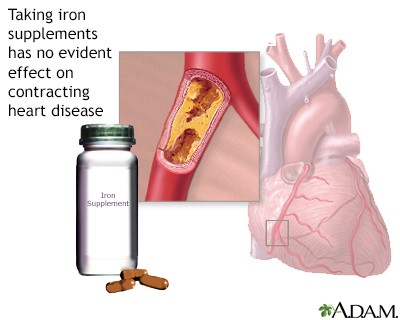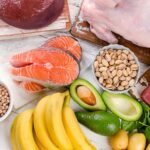Iron is an essential mineral that plays a vital role in maintaining overall health and energy levels. It’s a key component of hemoglobin, the protein in red blood cells that carries oxygen throughout your body. Since your body can’t produce iron on its own, you need to obtain it through your diet. Incorporating the Best Iron Rich Foods into your meals is crucial for preventing deficiency and ensuring your body functions at its best.
Why Iron is Essential for Your Body
Iron’s primary function is to help create hemoglobin and myoglobin. Hemoglobin, as mentioned, is critical for oxygen transport in the blood. Myoglobin, on the other hand, stores oxygen in your muscles, providing energy for physical activity. Without enough iron, your body can’t produce sufficient hemoglobin or myoglobin, leading to iron deficiency.
Iron deficiency, if prolonged, can result in iron deficiency anemia. This condition manifests in various symptoms, including:
- Persistent fatigue and low energy
- Shortness of breath, even with mild exertion
- Frequent headaches
- Increased irritability
- Dizziness and lightheadedness
- Unexplained weight loss
- Pale skin, especially noticeable in the tongue
- Spoon-shaped fingernails (koilonychia)
Certain groups are at a higher risk of developing iron deficiency. These include:
- Menstruating women, particularly those with heavy periods
- Pregnant women and new mothers due to increased iron demands
- Endurance athletes, like long-distance runners, who may lose iron through sweat and foot strike hemolysis
- Individuals with gastrointestinal bleeding (e.g., from ulcers) or conditions that hinder nutrient absorption
- Regular blood donors
- Infants and young children who may not consume enough iron-rich foods
Ensuring adequate iron intake through the best iron rich foods is therefore vital for everyone, especially those in these higher-risk groups.
Top Food Sources of Iron: Heme and Non-Heme Iron
Dietary iron comes in two forms: heme and non-heme. Heme iron is found in animal products and is more easily absorbed by the body. Non-heme iron is found in plant-based foods and is less readily absorbed. To maximize your iron intake, it’s beneficial to include both types in your diet and understand how to enhance non-heme iron absorption.
Excellent Sources of Heme Iron
Heme iron, derived from hemoglobin and myoglobin, is highly bioavailable, meaning your body can absorb and utilize it efficiently. The best iron rich foods in the heme category include:
- Lean Red Meat, Especially Beef: Beef is a powerhouse of heme iron. Lean cuts provide a significant amount of iron without excessive fat. Liver is also exceptionally high in iron but should be consumed in moderation due to its high vitamin A content.
- Poultry, Dark Meat: Dark meat poultry, such as chicken and turkey thighs and legs, contains more iron than white meat.
- Seafood: Oysters, clams, mussels, and scallops are excellent sources of heme iron. Fish like salmon, tuna, and sardines also contribute to your iron intake.
 Close-up of iron supplement pills
Close-up of iron supplement pills
Alt text: Iron supplement capsules on a white background, illustrating a concentrated source of dietary iron.
Good Sources of Non-Heme Iron
Non-heme iron, while less readily absorbed, is still a crucial part of a balanced diet, especially for vegetarians and vegans. You can boost its absorption by combining it with enhancers, which we’ll discuss later. Plant-based best iron rich foods include:
- Legumes: Dried beans (kidney beans, black beans, chickpeas), lentils, soybeans, and peas are all good sources of non-heme iron.
- Dried Fruits: Prunes, raisins, and apricots provide a decent amount of iron, along with fiber and other nutrients.
- Nuts and Seeds: Almonds, cashews, Brazil nuts, pumpkin seeds, sunflower seeds, and sesame seeds contribute to your daily iron intake.
- Dark Leafy Green Vegetables: Spinach, kale, collard greens, and dandelion greens offer non-heme iron, along with vitamins and minerals.
- Whole Grains: Fortified cereals, oats, quinoa, brown rice, and whole wheat products can contribute to your iron intake, especially when fortified.
Tips to Maximize Iron Absorption from Food
To get the most out of the best iron rich foods, especially non-heme iron sources, consider these strategies to enhance absorption:
- Combine Heme and Non-Heme Iron Sources: Eating a small amount of heme iron food (like meat, poultry, or fish) with non-heme iron foods (like beans and spinach) in the same meal can significantly increase non-heme iron absorption.
- Boost with Vitamin C: Vitamin C dramatically enhances non-heme iron absorption. Include vitamin C-rich foods like citrus fruits (oranges, lemons, grapefruits), strawberries, tomatoes, bell peppers, and potatoes in your meals containing non-heme iron sources. A squeeze of lemon juice on your spinach salad or having an orange with your lentil soup can make a difference.
- Cook in Cast Iron: Cooking acidic foods like tomato-based sauces or scrambled eggs in a cast iron skillet can slightly increase the iron content of your food.
- Be Mindful of Iron Absorption Inhibitors: Certain substances can hinder iron absorption. Tannins in black tea and coffee, phytates in legumes and grains, and calcium in dairy products can interfere with iron uptake. While you don’t need to eliminate these foods, be mindful of their consumption around mealtimes rich in iron. For example, avoid drinking tea or coffee immediately before, during, or after an iron-rich meal.
Iron Recommendations and Potential Risks
The recommended daily allowance (RDA) for iron varies based on age, sex, and life stage. It’s important to consume adequate iron to prevent deficiency, but also to avoid excessive intake, which can also be harmful.
Here are the general RDA guidelines for iron:
Infants and Children:
- Under 6 months: 0.27 mg/day (Adequate Intake)
- 7 months to 1 year: 11 mg/day
- 1 to 3 years: 7 mg/day
- 4 to 8 years: 10 mg/day
Males:
- 9 to 13 years: 8 mg/day
- 14 to 18 years: 11 mg/day
- 19 years and older: 8 mg/day
Females:
- 9 to 13 years: 8 mg/day
- 14 to 18 years: 15 mg/day
- 19 to 50 years: 18 mg/day
- 51 years and older: 8 mg/day
- Pregnant women (all ages): 27 mg/day
- Lactating women (19-30 years): 9 mg/day
While iron deficiency is more common, excessive iron intake can also pose health risks. Iron overload, or hemochromatosis (often genetic), can lead to iron accumulation in organs, causing damage. Iron poisoning can also occur from excessive supplementation, especially in children. Symptoms of iron poisoning can include fatigue, nausea, vomiting, abdominal pain, and in severe cases, organ damage.
Conclusion: Fuel Your Health with Iron Rich Foods
Incorporating the best iron rich foods into your daily diet is fundamental for maintaining energy, supporting oxygen transport, and overall well-being. By understanding the difference between heme and non-heme iron, learning how to enhance absorption, and being mindful of recommended intakes, you can effectively meet your iron needs through diet. Focus on a balanced diet rich in diverse iron rich foods and consult with a healthcare professional if you have concerns about your iron levels or suspect a deficiency. Prioritizing iron-rich nutrition is a powerful step towards a healthier and more energetic you.
References
Mason JB, Booth SL. Vitamins, trace minerals, and other micronutrients. In: Goldman L, Schafer AI, eds. Goldman-Cecil Medicine. 26th ed. Philadelphia, PA: Elsevier; 2020:chap 205.
Maqbool A, Parks EP, Shaikhkhalil A, Panganiban J, Mitchell JA, Stallings VA. Nutritional requirements. In: Kliegman RM, St. Geme JW, Blum NJ, Shah SS, Tasker RC, Wilson KM, eds. Nelson Textbook of Pediatrics. 21st ed. Philadelphia, PA: Elsevier; 2020:chap 55.
National Institutes of Health website. Iron: fact sheet for health professionals. ods.od.nih.gov/factsheets/Iron-HealthProfessional/. Updated April 5, 2022. Accessed February 21, 2023.
